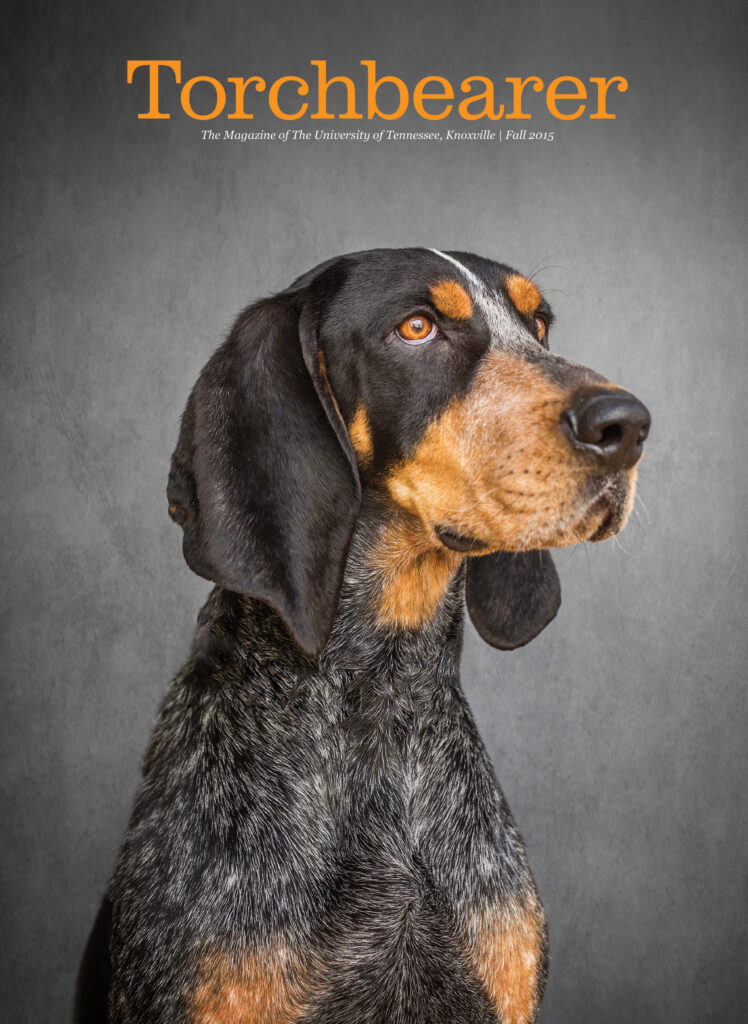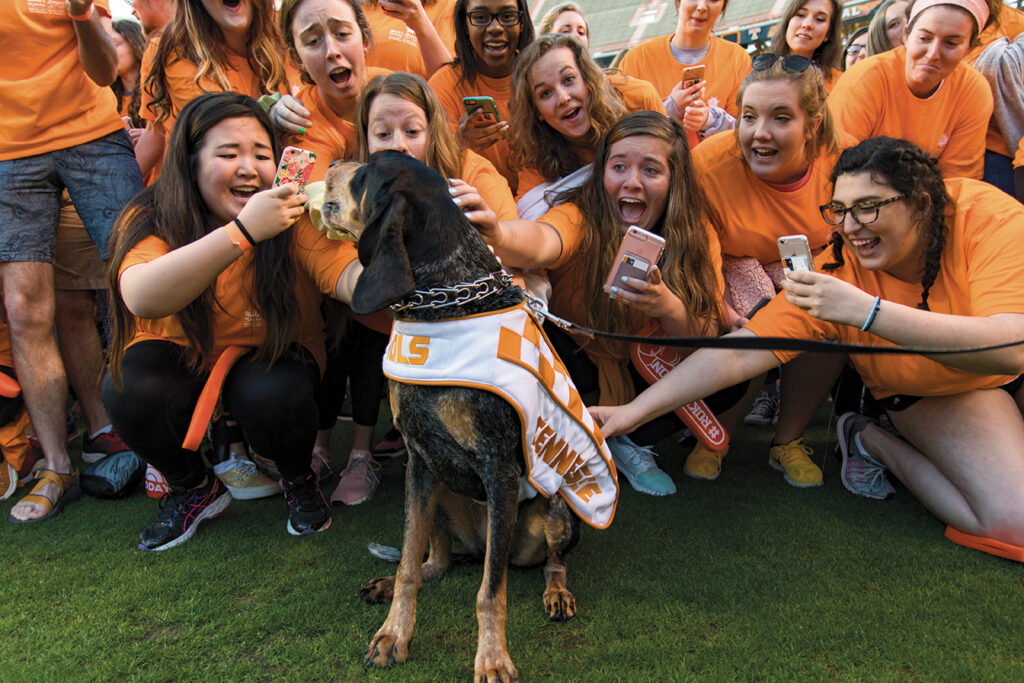



Supercharge Your Socials
Use these tips to increase your magazine’s social media reach and engagement.
By Cassandra Sproles
I had been out of college for two decades by the time I began working on my master’s degree in the fall of 2020 at the University of Tennessee, where I also work as executive editor of the alumni magazine and on the university’s main social media team.
WAIT! Don’t leave yet!
This isn’t a story about how I persisted through the pandemic to earn a graduate degree after being out of school for so long. This is a story about how I used what I was learning in my strategic and digital communications program to be a better magazine editor, make my work more valuable to my managers and, most importantly, get more eyes on our stories and important messages.
In the spring of 2021, I proposed a practicum to my graduate program advisor: I’d analyze our alumni magazine’s social media reach and engagement rates and find ways to improve them. Through ensuing research, surveys, and a lot of trial and error, I found some strategies and tactics that have worked well in this continuing pursuit.
But this isn’t an exact science. If you’ve worked in social media at all, you know that things change daily, and the algorithm gods are fickle. However, by devoting some time, thought, and a little extra effort, you can make these tips work for you, too.
SETTING THE STAGE
Torchbearer is the magazine of the University of Tennessee, Knoxville, and is produced in the central Office of Communications and Marketing (OCM) in partnership with our Office of Advancement. UT has more than 200,000 alumni around the world, and we mail the print issue of the magazine to around half of them twice a year. We also send a companion email newsletter to all alumni for whom we have an address.
Torchbearer has its own website but does not have its own social media channels. For that coverage, we rely on UT’s main social accounts (on Facebook, X, Instagram, LinkedIn, and TikTok), which are also maintained by OCM.
I realize that not every university magazine editor has the kind of access to their institution’s main social media accounts that I have. While I’m on the university’s social media team, some editors may be in other divisions like alumni affairs, advancement, or even individual colleges.
So, here’s my first tip: Make friends with your social media managers. Take them to coffee. I’ve worked in social media for more than 15 years, and I’ve yet to meet a social media professional who doesn’t like coffee. Let them know you can share content with them that aligns with your institution’s strategic priorities as well as engaging and entertaining content that’s appropriate for a variety of audiences.
The “variety of audiences” part of that statement is important in the world of higher ed social media. Depending on the channel, university social accounts could be talking to current and prospective students, faculty and staff, alumni, parents, athletics fans, media, community members, legislators, or peer institutions. Well-done content is in high demand, but strategic content that can inform and delight multiple stakeholders at the same time is invaluable. And that’s the kind of content our alumni magazines provide.
In the past, I had never given much thought to how we promote magazine stories on our social media accounts. Standard practice was to write a short caption to hook the reader and include a link—preferably as a preview with an eye-catching photo. From time to time, we would post videos that were produced to support magazine stories, but that was it.
Sometimes these pieces of content would perform very well on social media, depending on the subject of the story.
In 2015, a story and images of our handsome mascot, a bluetick coonhound named Smokey, enjoyed tons of engagement on social media as well as earned media from national outlets. Nearly 10 years later, I still come across people sharing the story and using the magazine’s cover image as their profile picture on social media.
Nearly 10 years later, I still come across people sharing the story and using the magazine’s cover image as their profile picture on social media.
Just a couple of years later, we tweeted a Torchbearer story about a history class taught through the lens of country music legend Dolly Parton, who grew up about an hour away from campus and holds an honorary degree from UT. We tagged the superstar, and her account quote-tweeted us, sharing a short, positive message from Parton. The story of the history class went viral, garnering the university millions of dollars in earned media from national and international news and entertainment outlets. But these two instances are outliers when it comes to successful social media posts. Smokey and Dolly are two subjects that our social team knows will always get great engagement. It’s the everyday stories that need a little help getting out to the wider world.
LAYING THE GROUNDWORK
I began my practicum by establishing a baseline for how magazine content from the spring 2021 issue of Torchbearer had performed on social media. I collected analytics from June through October for Facebook and X (which was then still Twitter)—the only two channels on which we were regularly posting.
Likes, comments, and shares for our feature stories were low, with none of those categories breaking 200 except for a story about the women faculty members who run our world-renowned Anthropological Research Facility, better known as the Body Farm (yet another perennially popular topic).
Digging around, I found that this amount of engagement was normal, even for the big players in the magazine game. In many cases, magazines like Rolling Stone, The Atlantic, Garden and Gun, and The Bitter Southerner were getting similar engagement rates. Even though Rolling Stone and The Atlantic have millions of followers on Facebook and X, their long-form story posts hovered around 100 likes or less. Instagram was a little more popular, with between 2,000 and 10,000 likes on story posts, which is significantly low when compared to their follower counts.
 I also conducted surveys of university magazine editors and social media managers to find out if others were having success with this type of content on social media. I learned that, at the time, a lot of us were in the same boat when it came to the channels we were utilizing and the way we were posting stories—write a caption, throw a link up on Facebook and X, and check that task off the to-do list. This left me so much room for experimentation and improvement.
I also conducted surveys of university magazine editors and social media managers to find out if others were having success with this type of content on social media. I learned that, at the time, a lot of us were in the same boat when it came to the channels we were utilizing and the way we were posting stories—write a caption, throw a link up on Facebook and X, and check that task off the to-do list. This left me so much room for experimentation and improvement.
MOVING THE NEEDLE
Combining what I had learned through research and my graduate courses, I came up with ten tactics to try with magazine content. Here are the top six that helped move the needle on our reach and engagement—and that I still use today.
Know Your Audience: I realize it seems like common sense but refresh your knowledge of who exactly is frequenting your social media channels. Ask whoever has the keys to your institution’s or organization’s social media program for a breakdown of primary and secondary audiences for all channels. You might be missing a real opportunity if you are, for example, only posting stories about alumni on Facebook or X. As of April 2024, people between the ages of 25 and 34 were the largest group of users on Instagram at 28.3 percent (statista.com), making the platform a prime target for messaging to young alumni.
To help my team through the process of choosing social media channels for individual stories, I made a social media process guide that lists our audience types, the primary and secondary audiences (with age ranges) for our main social media channels, and a few questions to help choose where a story should be posted (email me if you’d like a copy).
Turn Long-Form into Short-Form: With attention spans getting shorter and shorter, taking your long-form content and condensing it into easily consumable, bite-size pieces will help get your message across more quickly and maybe pique readers’ interest to know more.
 To test this idea, we experimented with Instagram Stories, Facebook Stories, and X/Twitter threads. We took our longer stories and broke them down into five to eight sentences, formatting one per slide or tweet. Each piece of content began with a hook or lede that encompassed the idea or message of the story and included two options for the reader: swipe through or scroll to view this shortened version of the story, or click the link to read the entire piece on the magazine website. The last slide or tweet repeated the link to the story, giving the reader yet another chance to learn more.
To test this idea, we experimented with Instagram Stories, Facebook Stories, and X/Twitter threads. We took our longer stories and broke them down into five to eight sentences, formatting one per slide or tweet. Each piece of content began with a hook or lede that encompassed the idea or message of the story and included two options for the reader: swipe through or scroll to view this shortened version of the story, or click the link to read the entire piece on the magazine website. The last slide or tweet repeated the link to the story, giving the reader yet another chance to learn more.
A word to the wise: Start early in your process to plan for these assets. Including social media deliverables like this in your content-development process ensures you’ll have the right elements to make this type of content successful. Knowing which article will be turned into an Instagram Story, for instance, means that I can work with our photographer or art director to get enough images in the correct specs to create an eye-catching social piece.
Since UT’s Instagram account has such a wide audience—prospective students all the way to middle-aged alumni—I can post nearly all of our feature stories there. We also create an Instagram Story promoting the contents of the entire magazine with links to each story. Instagram Stories disappear after 24 hours, but you can save them to an Instagram Story Highlight that appears on your profile as an icon. We have one specifically for Torchbearer magazine.
One recent Instagram Story about experiential learning in our student-run ice cream shop, the UT Creamery, reached more than 10,000 accounts, and by the sixth and last slide, more than 7,000 viewers had “seen” our story. As a bonus, more than 150 people clicked the URL to read the long-form piece.
Finding success on social media for long-form content takes a lot of experimentation—so don’t be afraid to do just that!
Get on the Carousel: According to Hootsuite, Instagram carousel posts—which display up to 20 photos or videos that users can swipe through— receive an average of 154 more interactions than single-image posts. But a carousel can be more than just visuals and a caption. As with the previous tip, you can break down a feature story into small bits and incorporate photos, illustrations, or videos.
A carousel post will stay on your Instagram grid, and you can use a free tool like Later’s Link in Bio (later.com/link-in-bio) or Linktree (linktr.ee) to direct readers from your post to the full story.
Tapping into the spooky vibes around Halloween, we took a story from our fall 2023 print magazine about hauntings on campus and turned it into a carousel using photo illustrations and shortened text. The post garnered more than 7,000 likes, 28 comments, 1,300 shares, and 399 saves. Nearly 400 people visited the full story online via our Link in Bio.
Game the Algorithm: As I wrote before, the algorithm is fickle, but that doesn’t mean you can’t find ways to beat it. If you have a story ready to post on Facebook or X that is likely to be low performing, plan to post something before it that you know will get a lot of engagement. The attention from that post may lead to the algorithm serving up your story post to more people. According to Hootsuite, your Facebook feed is populated with content from people and pages that you follow and interact with. So, it stands to reason that if someone who follows UT’s page reacts or comments on a photo of our mascot Smokey, they will probably get served our next post as well.
Spread the Word: Before every issue of Torchbearer hits physical and digital mailboxes, I send a group email to every communicator and social media manager at the university who has a connection to a story in the upcoming issue. I lay out my social media posting schedule for each story and let them know on which channels they can find the content. The most important part is that I ask them to share it with their audiences, and at least half do. It’s a win-win situation. They get strategic, high-quality content, and we get extended reach and life for our stories.
 Keep Up with Trends and Events: Tying your content to trending topics is one of the tried-and-true ways to get engagement on your posts. But not every trend is right for your institution’s brand. After more than a decade working in social media, I try to look at any post from our audience’s point of view to see if there’s anything questionable that someone might turn against us or that might cause a larger issue. Your social media manager will know immediately if a proposed post is a good idea or not.
Keep Up with Trends and Events: Tying your content to trending topics is one of the tried-and-true ways to get engagement on your posts. But not every trend is right for your institution’s brand. After more than a decade working in social media, I try to look at any post from our audience’s point of view to see if there’s anything questionable that someone might turn against us or that might cause a larger issue. Your social media manager will know immediately if a proposed post is a good idea or not.
We recently had great engagement on Instagram and Facebook referencing the premiere of the popular Netflix series “Bridgerton” in a post for a story about our English department hosting a throwback Jane Austen Regency Ball. The post on Facebook had more than 300 likes, 47 positive comments, and 46 shares. The number of shares nearly equaling the number of comments is a big indicator of success and reach. While those numbers may not seem huge, engagement and reach on Facebook have taken a dive over the last few years. Business.com noted a drastic drop in organic reach rates on the platform because of changes in its algorithm. For an academic story, this was a big win.
Finding success on social media for long-form content takes a lot of experimentation—so don’t be afraid to do just that! Your audiences and how they use social media may be different than UT’s. Throw all the spaghetti against the wall and see what sticks. It may take a little more planning and effort to see gains, but the return on investment will be worth it.
Cassandra J. Sproles is editorial content manager of the Office of Communications and Marketing at University of Tennessee. She has served as executive editor of Torchbearer magazine and as a member of the university’s central social media team for 12 years. She is a lecturer in the UT Haslam College of Business, developing the college’s first social media marketing class. Connect via sproles@pagesthemagazine.com.

